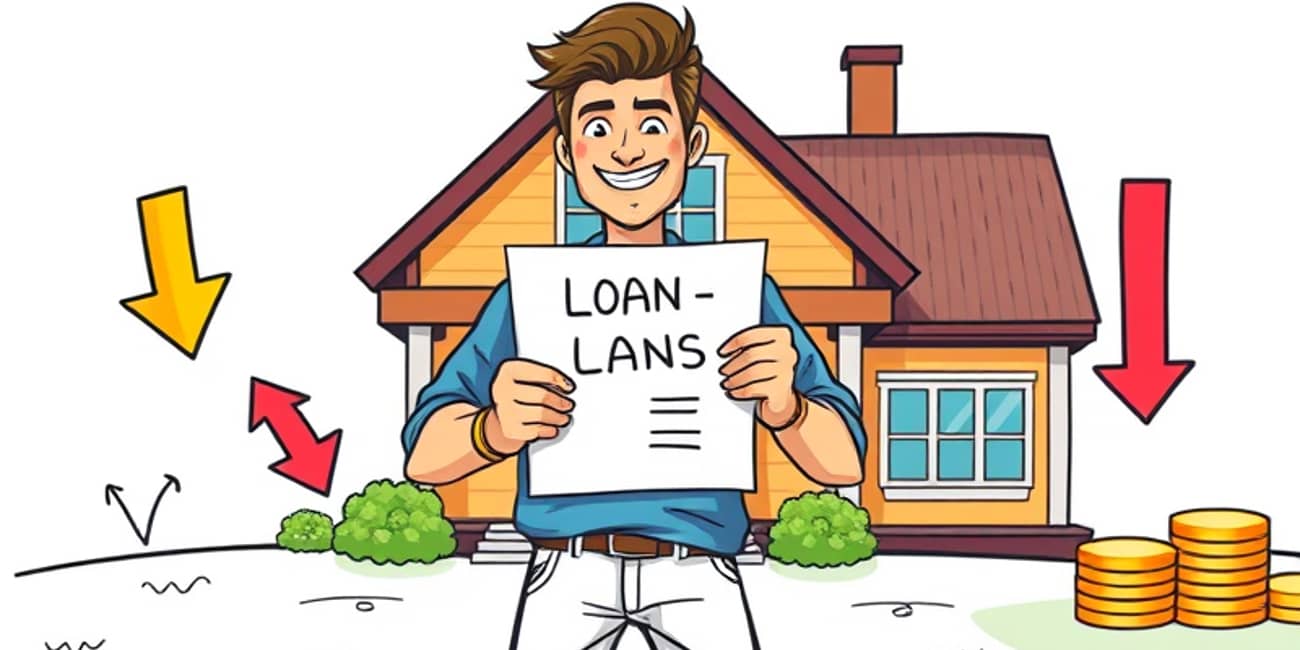In the ever-evolving financial landscape of 2025, borrowers must navigate a complex web of interest rates, loan terms, and market dynamics. Refinancing has emerged as a crucial option for homeowners and borrowers who wish to modify their financial situations and reduce their monthly payments. Whether your intention is to lower your interest rate, shorten your loan duration, or tap into your home equity, a well-thought-out strategy is essential. This article will guide you through the nuances of refinancing this year, providing insights, statistics, and practical steps to help you make informed choices and maximize your savings.
Refinancing a loan entails more than simply filling out paperwork. It demands a detailed examination of current market trends, an in-depth understanding of available options, and a clear outline of your financial goals. As interest rates shift, borrowers who navigate this process effectively can experience advantages such as improved cash flow, expedited debt repayment, and greater long-term wealth accumulation. Let’s explore the current market conditions, review the different refinancing options, and pinpoint the key elements that will enable you to refinance with assurance and purpose.
Understanding the Current Refinancing Landscape
As we approach the midpoint of 2025, average refinancing rates for conventional mortgages reveal both opportunities and challenges. Thirty-year fixed rates hover around 7.04%, while fifteen-year fixed rates are approximately 6.12%. Jumbo mortgages tend to carry slightly higher rates, while government-backed loans, such as FHA and VA options, remain competitive alternatives. These rates have shown minor fluctuations over the past week, highlighting the significance of timing for those considering refinancing.
Recent weekly refinancing activity has shown a slight dip—30-year fixed loans decreased by three basis points, and 15-year fixed loans fell by ten basis points—suggesting that locking in a lower rate remains an achievable goal. However, heightened demand and variable treasury yields imply that rates may change rapidly. Monitoring the Fannie Mae Refinance Application-Level Index, which reported a 6.4% decline week-over-week but a notable 15.7% increase year-over-year, can assist you in evaluating transaction volumes and optimal timing.
Types of Refinancing Options
Your refinancing strategy should align with your unique financial situation and aspirations. Understanding the main types of refinancing is the first step in identifying the right approach for you.
- Rate-and-Term Refinance: This option adjusts the interest rate, loan duration, or both to improve the loan structure and significantly reduce your loan duration.
- Cash-Out Refinance: This allows you to withdraw equity from your home as cash for renovations, educational expenses, or debt consolidation, typically at favorable rates.
- Streamline Refinance: A streamlined refinancing process available for borrowers with FHA and VA loans, which reduces documentation requirements and expedites approval times.
- Student Loan Refinancing: This method consolidates federal or private student loans into a single new loan, often featuring lower interest rates and more flexible terms.
Key Benefits of Refinancing
Refinancing can unlock a multitude of financial advantages, but achieving success hinges on aligning these benefits with your long-term objectives. When executed effectively, refinancing allows homeowners and borrowers to optimize their payments and equity.
- Lower Interest Rates: A reduction in your interest rate by 1% or more can save you thousands over the life of the loan and lessen your monthly payments.
- Shortened Loan Term: Shifting from a 30-year to a 15-year loan can reduce total interest costs and accelerate equity accumulation.
- Access to Home Equity: Cash-out refinancing can provide funding for major expenses at rates often more favorable than credit cards or personal loans.
- Switching Loan Structures: Transitioning from an adjustable-rate mortgage to a fixed-rate loan enables you to maintain predictable monthly mortgage payments.
- Reduced Student Debt Costs: Consolidating multiple loans into one payment can potentially lower both your monthly payment and total interest.
Essential Considerations Before You Refinance
While the allure of obtaining better rates and shorter terms is enticing, refinancing entails costs and risks that require careful consideration. Fees can range from 2% to 5% of your loan amount, covering appraisal, application, and closing costs. It’s vital to account for these expenses in your decision-making process to ensure you calculate your break-even point prior to moving forward.
- Refinancing Costs: Application fees, appraisal costs, title insurance, and closing fees can accumulate quickly.
- Break-Even Analysis: Ascertain how many months it will take to recoup fees through lower payments; avoid refinancing if you plan to sell the property beforehand.
- Credit Score Impact: Hard inquiries may cause a slight dip in your scores; however, researching multiple lenders within a short period can minimize this impact.
- Loan Term and Rates: Lengthening your terms may lower monthly payments but could lead to higher total interest payments.
- Equity Requirements: Most lenders require a minimum of 20% equity to avoid mortgage insurance.
By considering ongoing rate trends alongside your personal financial timeline, you can determine if the trade-offs align with your objectives. For example, if rates are anticipated to rise, securing a new rate sooner may be advantageous.
Who Stands to Gain the Most?
Certain borrowers are particularly well-positioned to capitalize on refinancing in 2025. Homeowners with original mortgage rates exceeding 7% could realize significant savings by switching to current market rates below 7%. Additionally, individuals whose credit scores have improved since acquiring their initial loan may be eligible for more favorable terms.
Homeowners with substantial equity can leverage cash-out refinancing for significant expenses or debt consolidation at lower interest rates than unsecured borrowing options. Likewise, borrowers managing high-interest debt, such as credit cards or personal loans, can streamline their finances and reduce interest costs by consolidating into a single, lower-rate mortgage or student loan.
How Mortgage Refinancing Works
Refinancing entails replacing your existing loan with a new mortgage under revised terms. The process typically mirrors your original mortgage application and includes credit checks, income verification, and property appraisal. Lenders assess your debt-to-income ratio and property value to determine eligibility.
Upon approval, the new lender pays off your previous loan, and you begin making payments according to the new agreement. It’s crucial to be aware that refinancing often results in a hard inquiry on your credit report, which may slightly lower your score. However, maintaining a consistent payment history usually results in a quick recovery.
Loan denials can occur if you fail to meet the lender’s criteria, such as insufficient income or inadequate equity. Therefore, prequalifying with multiple lenders can provide a clearer understanding of available options without significantly impacting your credit.
Steps to Ensure a Smooth Refinancing Journey
Preparation and thorough research are key to a successful refinance. Start by gathering all necessary documentation—income statements, tax returns, asset details, and debt information. Review your credit report for any inaccuracies and correct errors to ensure you secure the best offer.
Next, diligently explore lenders and loan products. Obtain quotes from multiple institutions—including banks, credit unions, and online lenders—to compare APRs and closing costs. Evaluate both fixed and adjustable-rate options, considering how long you plan to stay in the home versus potential rate fluctuations.
When submitting your application, maintain open lines of communication with your loan officer to address any requests promptly. Stay engaged during the appraisal process by ensuring your property is well-maintained and accessible. Finally, carefully review the Closing Disclosure to confirm all terms before signing.
Conclusion: Taking Control of Your Financial Future
Refinancing is not merely a transactional decision; it is a strategic choice that can reshape your financial landscape and lay the groundwork for long-term stability. By understanding current market dynamics, evaluating available loan types, and weighing costs against benefits, you empower yourself to make decisions that resonate with your goals.
Whether your objective is to lower your monthly expenses, expedite debt repayment, or access equity for significant life events, the keys to success lie in meticulous planning, expert guidance, and timely action. Armed with these insights and a clear refinancing roadmap, you can confidently embark on the journey toward a more secure financial future.



